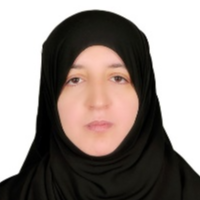
Al-Alimi Dalal
Work place: Faculty of Computer science, China University of Geoscience, Wuhan, China
E-mail: dalalm.ali@hotmail.com
Website:
Research Interests: Computational Learning Theory, Image Compression, Image Manipulation, Image Processing, Data Structures and Algorithms
Biography
AL-Alimi Dalal is currently M.Sc. in Computer Science, China University of Geosciences (Wuhan), Wuhan, China. She received B.Sc. Electrical Computer and IT from Sana’a University, Yemen. Her research interests include object detection, machine learning, deep learning, AI, image processing, and IoT.
Author Articles
Robust Monocular Visual Odometry Trajectory Estimation in Urban Environments
By Ahmed Abdu Hakim A. Abdo Al-Alimi Dalal
DOI: https://doi.org/10.5815/ijitcs.2019.10.02, Pub. Date: 8 Oct. 2019
Visual SLAM (Simultaneous Localization and Mapping) is widely used in autonomous robots and vehicles for autonomous navigation. Trajectory estimation is one part of Visual SLAM. Trajectory estimation is needed to estimate camera position in order to align the real image locations. In this paper, we present a new framework for trajectory estimation aided by Monocular Visual Odometry. Our proposed method combines the feature points extracting and matching based on ORB (Oriented FAST and Rotated BRIEF) and PnP (Perspective-n-Point). Thus, it was used a Matlab® dynamic model and an OpenCV/C++ computer graphics platform to perform a very robust monocular Visual Odometry mechanism for trajectory estimation in outdoor environments. Our proposed method displays that meaningful depth estimation can be extracted and frame-to-frame image rotations can be successfully estimated and can be translated in large view even texture-less. The best key-points has been extracted from ORB key point detectors depend on their key-point response value. These extracted key points are used to decrease trajectory estimation errors. Finally, the robustness and high performance of our proposed method were verified on image sequences from public KITTI dataset.
[...] Read more.Other Articles
Subscribe to receive issue release notifications and newsletters from MECS Press journals